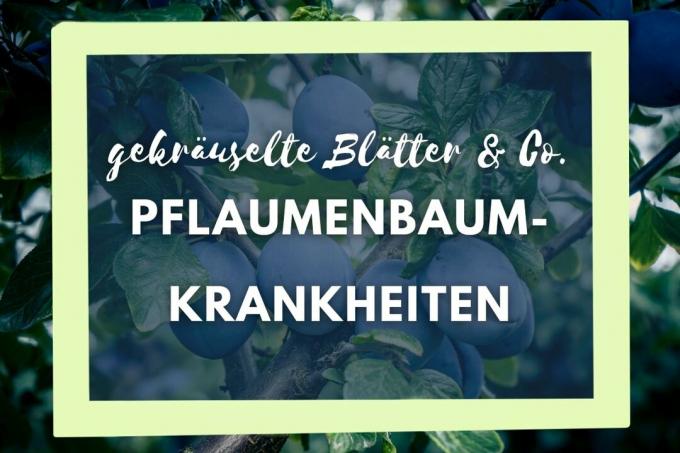
table of contents
- Plum tree diseases
- from A to N
- from M to R
- from S to U
- from V to Z
- frequently asked Questions
If the leaves, fruits or shoots on the plum tree (Prunus domestica) suddenly change, quick help is required. We have put together the most important tips for combating plum tree diseases and pests for you.
In a nutshell
- Changes to leaves, shoots or fruits due to pests, diseases or care errors
- Monilia fruit rot and Sharka disease dangerous
- regular check-ups to prevent diseases or to treat them in good time
- Professional pruning strengthens vitality and prevents diseases
- Natural gardening promotes the settlement of beneficial insects and prevents pest infestation
Plum tree diseases
Diseases of the plum tree can have various causes.
- Pests
- Viruses
- bacteria
- mushrooms
- Location and maintenance errors
from A to N
Bacterial burn
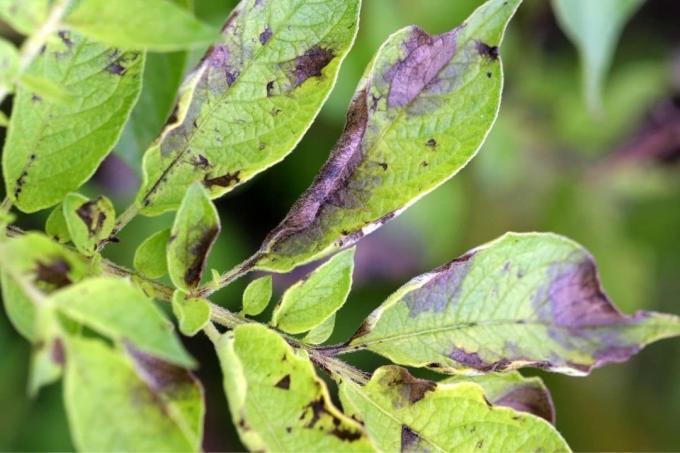
Symptoms:
- grooved, black-red injuries on trunk and branches
- in April / May these tear open and rubber flow occurs
- stunted buds
- Leaf changes in May with shotgun-like, translucent holes with a yellow border
- The trees die in the event of severe infections
Root cause:
- Bacteria Pseudomonas syringae
Prevention or control:
- thorough removal of dead and diseased shoots
- Cut after harvest, not in winter
- Whiten the trunk against frost cracks and infections
- Avoid cold locations
Galena infestation
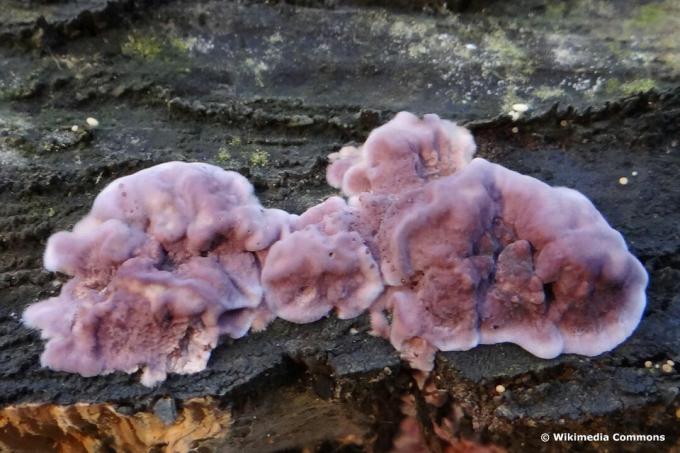
Symptoms:
- green-silvery sheen on leaves and twigs
- Restriction of plant growth
- Reduction of the yield
- Individual parts of the tree die off
Root cause:
- Harmful fungus Chondrostereum purpureum
Prevention or control:
- Plant strengthening with horsetail broth
- thorough removal of the fallen leaves and the diseased plant parts
Double fruits

Symptoms:
- Twin fruits on a fruit stalk
Root cause:
- high temperatures in the period of flower development
Prevention or control:
- not known
Note: The taste of the plums is not affected by this plum tree disease.
Throat wilt

Symptoms:
- Plums become soft and shrink in the upper part
- Decrease in taste
- Crack formation in the stem area
- Fruits taste bland
- The pulp becomes crumbly
Root cause:
- frequent occurrence when alternating longer dry and wet phases in summer
Note: Plum tree throat wilt disease occurs mainly in late varieties. Ortenauer, Hanita, Hauszwetsche and Elena are particularly susceptible.
Prevention or control:
- choose resistant varieties
Caverns and broken stones
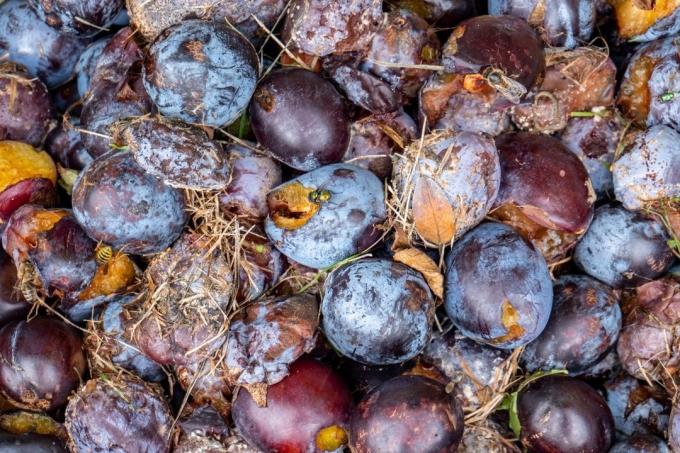
Symptoms:
- reddish cracks in the pulp
- Stones split or tips break off
- gelled juice inclusions
Root cause:
- inharmonious growth spurts
Prevention or control:
- choose modern, resistant varieties when replanting
from M to R
Monilia fruit rot

Symptoms:
- sudden rotting of the fruit in July and August
- brown or yellow-brown, growing spore beds on fruits
Root cause:
- Harmful fungi Monilia laxa or Monilia fructigena
Prevention or control:
- consequent removal of fruit mummies on the tree and on the ground
- Removing diseased branches
- Cut back into the healthy wood
- Thinning out the treetop
Note: Do not dispose of diseased plant parts on the compost, but in the residual waste or in the organic waste bin to prevent them from spreading.
Fool's or pocket sickness

Symptoms:
- young fruits deform and shrink
- turn greenish in color
- furry coating on the plums
- premature fall of the fruits
Note: Species that are particularly endangered by plum tree disease are: 'Ortenauer', 'Bluefree', 'President' and 'Hauszwetsche'.
Root cause:
- Harmful fungus Taphrina pruni
- humidity
Prevention or control:
- Remove diseased twigs and fruit mummies immediately
- Rejuvenation pruning in older trees
- Splash horsetail or tansy broth
- Plant the garlic on the tree slice
Note: The 'Tophit' variety is considered to be resistant to the fool's disease.
Fruit tree spider mite
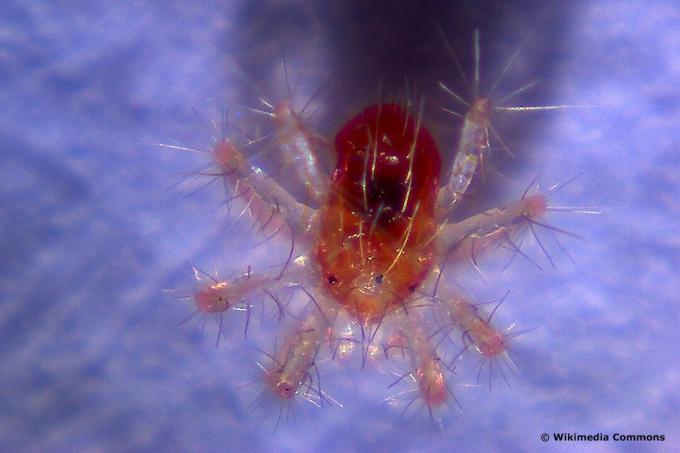
Symptoms:
- sudden leaf changes in June and July
- Leaves turn silver or bronze in color
Root cause:
- Fruit tree spider mite Panonychus ulmi
Prevention or control:
- Thoroughly remove diseased parts of the plant
- Establish beneficial organisms
Plum louse
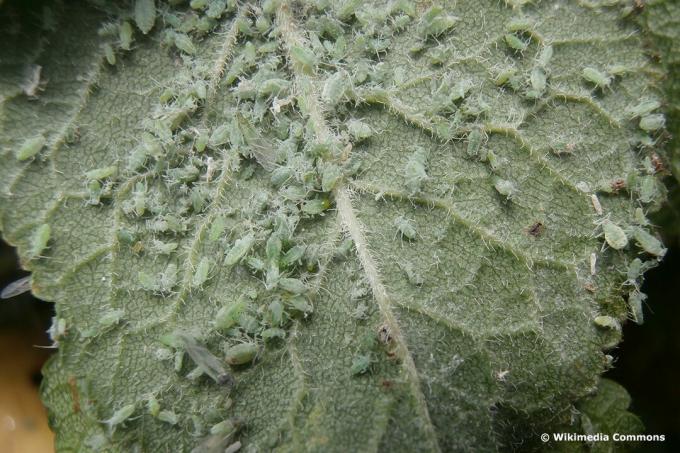
Symptoms:
- Leaves curling
- pale green lice
Root cause:
- Plum louse, Brachycaudus helichrysi
Prevention or control:
- Removal of affected parts of the plant
- Spray with horsetail or garlic stock
- Remove root shoots in autumn
Plum moth larva

Symptoms:
- Falling off the Stone fruit-Fruit
Root cause:
- Plum moth Cydia funebrana
Prevention or control:
- Shake the plum tree frequently
- Dispose of fallen fruit
- Remove affected parts of the plant
- Spray with neem oil solution
- Attach fruit maggot trap made of corrugated cardboard
Bursting of fruits
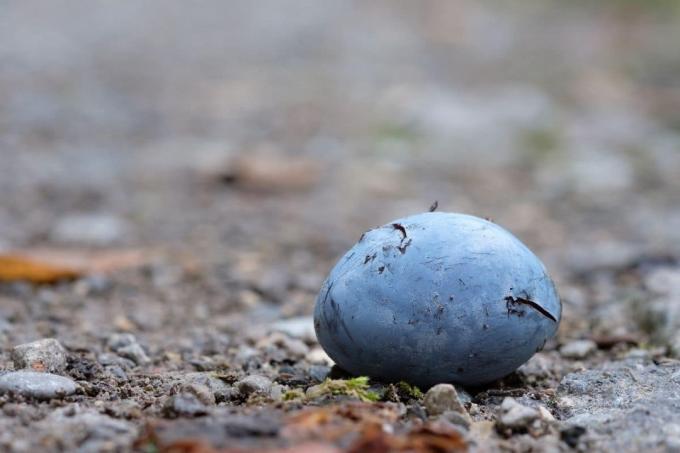
Symptoms:
- Fruits tear open
- Putrefaction arises
Root cause:
- strong rainfalls
Prevention or control:
- choose resistant varieties
from S to U
Sharka or smallpox disease

Symptoms:
- light and olive green spots on the leaves in early summer
- later black dots
- premature fall of the fruits
- pox-like depressions in the skin of the fruit
- gummy consistency of the pulp
Root cause:
- Sharkavirus
- is transmitted by aphids or by grafting
- more common with long periods of drought
Prevention or control:
- complete control not possible
- infected trees must be cleared
- Preventing the spread by fighting the transmitting insects
- Use of virus-free documents for grafting
- Prefer less susceptible varieties
Note: Sharka disease is that most dangerous viral disease with plums, plums and apricots. Signs of this disease are according to the Ordinance to Combat Sharka Disease notifiable! Sharp cat-tolerant varieties can become infected, but their fruits remain edible.
Shotgun Sickness
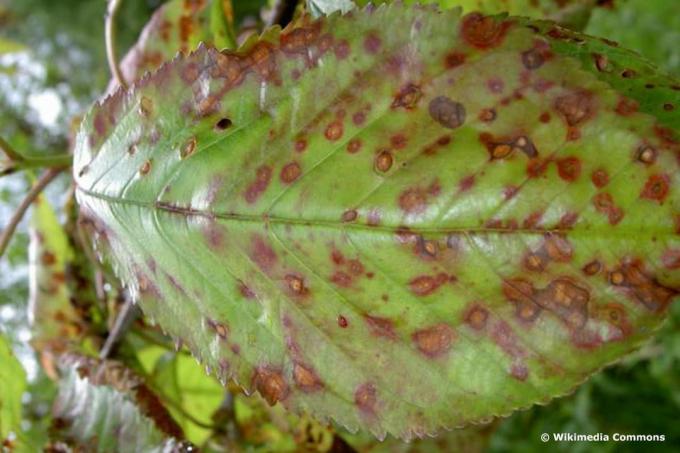
Symptoms:
- red-brown spots on young, infected leaves
- Spots fall out of the leaf tissue
- Perforation of the leaves
Root cause:
- Harmful fungus Clasterosporium carpophilum
- damp weather in spring
Prevention or control:
- Thoroughly remove fruit mummies
- Dispose of diseased leaves and parts of plants immediately
- Thinning out the treetop
- Plant garlic on tree slice
from V to Z
Valsa toad skin disease
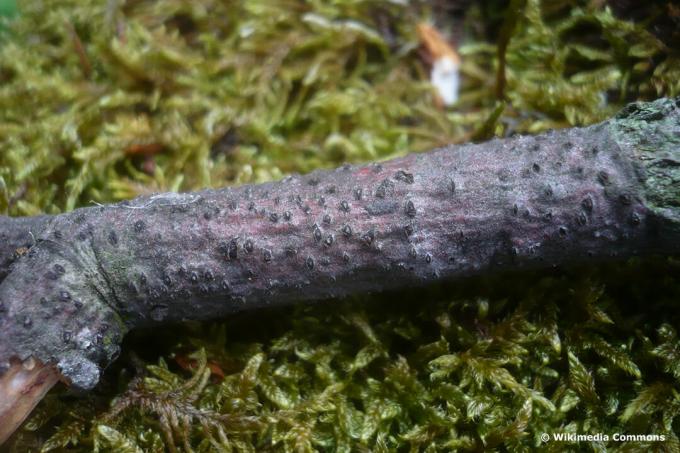
Symptoms:
- wart-like, black spots on the branches, which later turn white and secrete reddish mucus
- Rubber flow on the trunk and on the branches
- Rotten spots on the fruits
- Twigs dry up
Root cause:
- Leucostoma fungus that penetrates the wounds
Prevention or control:
- Thoroughly remove infected parts of the plant
- Disinfect the tool carefully
- Strengthening with horsetail broth
Browning of the pulp
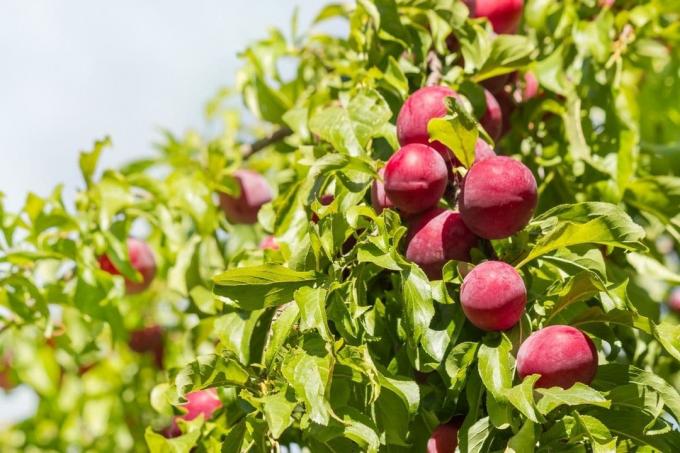
Symptoms:
- Just before ripening, plums suddenly become soft and glassy - ripening no longer progresses
- Fruits taste like they are cooked
Root cause:
- longer periods of heat with temperatures above 30 degrees Celsius
Prevention or control:
- choose a shady location when replanting a plum tree
Note: The browning of the pulp often occurs together with sunburn.
Plum grate
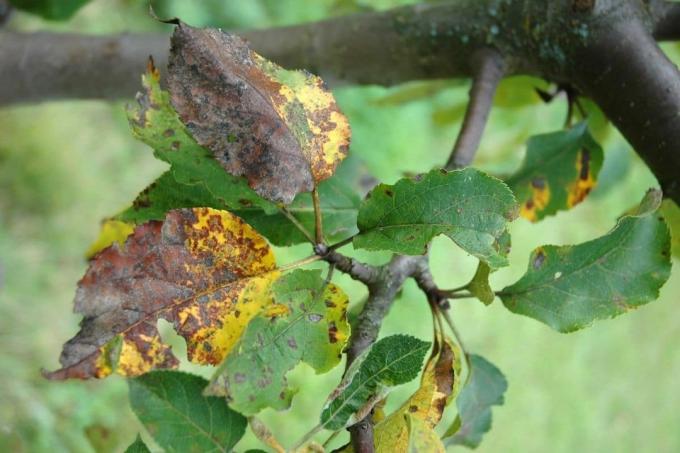
Symptoms:
- rust-colored spots and pustules on the underside of the leaves
- mosaic-like yellow patterns on the leaf tops
- early shedding of leaves in the event of severe infestation
causes
- Rust fungus
Prevention or control:
- Destroy ornamental junipers in the vicinity
- Strengthen trees with horsetail broth
- Thoroughly dispose of fallen leaves
- do not plant anemones or winterlings near plums
Note: The rust fungus occurs regularly in damp locations in sensitive varieties. He has no influence on the edibility of the fruit.
frequently asked Questions
Plum trees need deep soil with high water holding power. Waterlogging must be prevented by drainage. Plant the tree in a sheltered place near the house. Keep the tree grate free of weeds. Water when it is dry.
The varieties 'Freiya' and 'Jojo' are currently the only resistant varieties. 'Opal', 'Elena', 'Kathinka' and 'Tophit' are considered sharka-tolerant.
Opinions differ on this question. Most of the pathogens are completely destroyed in compost heaps, which are heated inside to temperatures of up to 70 degrees Celsius. To be on the safe side, we recommend that you dispose of all parts infected by pests or diseases in the household waste or in the organic waste bin.



